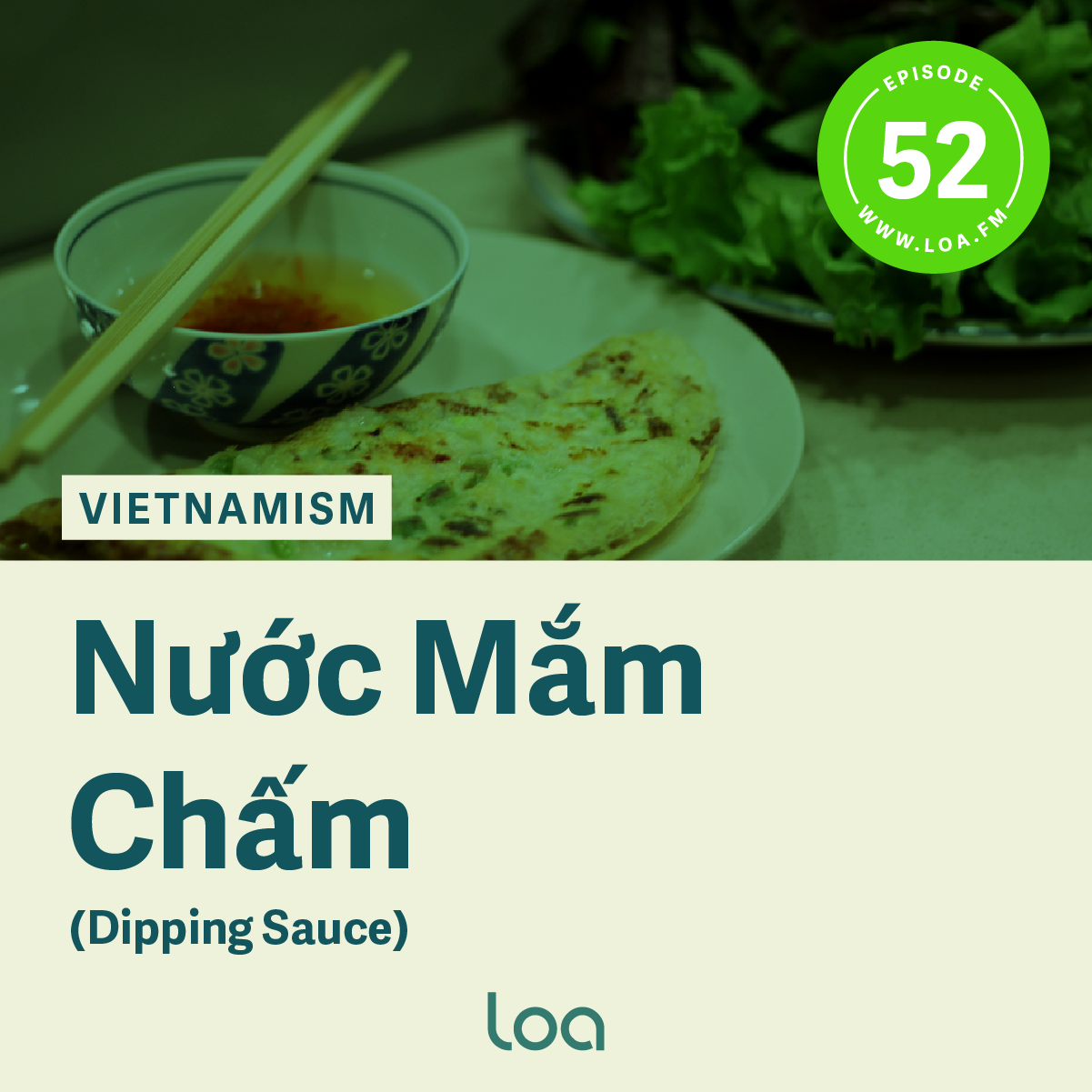Published July 11, 2016 in Episode 52
On the middle of my family’s kitchen table, there is always a sticky, smelly jar of nước mắm chấm. The liquid concoction is a sweet and pungent mixture of fish sauce, sugar, lime, and chiles we use to pour over rice or dip our spring rolls.
My mom usually stores her homemade fish sauce mix into plastic jars that used to hold cookies or candies. I never thought about how the fish sauce mix got there, until I moved away for college and had to make my own fresh jar of nước mắm chấm.
When I asked her for the recipe, she told me to grab a pen and a piece of scrap paper.
She began to list.
Ingredients
One bowl fish sauce
One bowl sugar
One bowl water
Half bowl vinegar
Two limes
Some garlic
Some chile
As I gather the ingredients to make my mother’s nước mắm chấm, I think back to her instructions.
I don’t know if there’s something like a Vietnamese rite of passage, but I kinda feel like recreating my mom’s nước chấm, and adding my own touch to perfect it, might be it.
I called up Chef Tú David Phú to better understand how these ingredients create such deep and satisfying flavors. Chef Tú, as he is known, runs a series of pop-up restaurants called Ăn in San Francisco, California. He originally hails from Việt Nam’s fish sauce capital, the island of Phú Quốc.
a photo of Chef Tu in action (Photo: Chef Tu David Phu)
“It’s seasoned fish sauce to keep it simple, and it can come in many shapes, many forms,” he explains. “Every grandmother, mother, father, brother, uncle from Việt Nam, they have their own sacred recipe.”
I take a whiff of the fish sauce, whew that’s strong. I’m setting the bottle aside for now.
“If you use fish sauce, you have to bloom it in some kind of way,” Tú reveals. “And the way I say bloom, what that actually means is if you have a glass of scotch, you can never drink scotch straight up. Because it’s been aged for so long. The smell of it. The fragrances, the aromas, it’s too pungent. So what they do is they pour a bit of water into it to dilute it to bloom it. The flavors are so concentrated your palate can’t handle, so you add a bit of water, so it’s balanced. You do the exact same thing with fish sauce.”
To bloom the fish sauce, I’ll first make the sweet limeade. I’ll add fish sauce to it when it’s done.
For this, I warm up my water only slightly to better dissolve the sugar. Chef Tú shares with me an interesting alternative to using plain old water.
“I’ve seen a lot of mothers use soda water, some of them use 7 Up, others use Sprite. And these are things I see my mom, my aunties and other mothers do in the States to kind of bloom the fish sauce. Back in Việt Nam, my aunties, they use coconut water, which is very interesting. And I haven’t seen that anywhere else. [They use] coconut water because it’s a more flavorful kind of water and it also adds a bit of sugar. It’s also neutral so it takes on anything without masking it up.”
I’m stirring the sugar water until I no longer hear the sugar crystals scratching at the bottom. Perfect.
the lime segments, chiles, garlic, and shallots in a wooden mortar before mashing (Photo: Loa/Kathy Triệu)
Now to add the lime juice, usually, I’ll cut the lime in half and squeeze the juice in, but Chef Tú says his mother has a better technique.
“She doesn’t juice the lime, she always supremes them. Maybe you’ve seen your mother do it, but ‘supreming’ is when you peel it by hand, and you segment out the flesh of the citrus, whether it’s lemon or lime, as opposed to juicing it. When you do that, it’s more aromatic and you get more of the oil from the fruit.”
So thanks to Chef Tú’s mother, I’m supreming a lime for the first time. For that I’m going to cut slits in my lime and start peeling it.
the aromatics after mashing (Photo: Loa/Kathy Triệu)
Alright now that that’s done, I just need to segment the flesh out. All these segments are going to be mashed together in a mortar with our aromatics– the shallots, garlic, and chilies. This is the best part. As I’m mashing this, all the aromas are filling up my kitchen.
Now that we have our limeade to bloom, it’s all left to taste. I’m taking my bottle of fish sauce, the one I set aside before. Any brand will do, but better quality fish sauce will make better-tasting fish dipping sauce. In homage to Chef Tú’s hometown, I have a bottle from Phú Quốc.
the final nước mắm chấm jar next to my bottle of nuoc mam from Phú Quốc (Photo: Loa/Kathy Triệu)
I’m going to splash it in by the spoonful. Splash, taste, and repeat. It should taste sweet and savory, more neutralized though still fishy enough to add a good dose of flavor to rice noodles.
And like most Vietnamese households, you should make a large supply of nước chấm and pour it into a glass jar for storage. And there we have it! A fresh jar of nước chấm to set in the middle of my own kitchen table.





